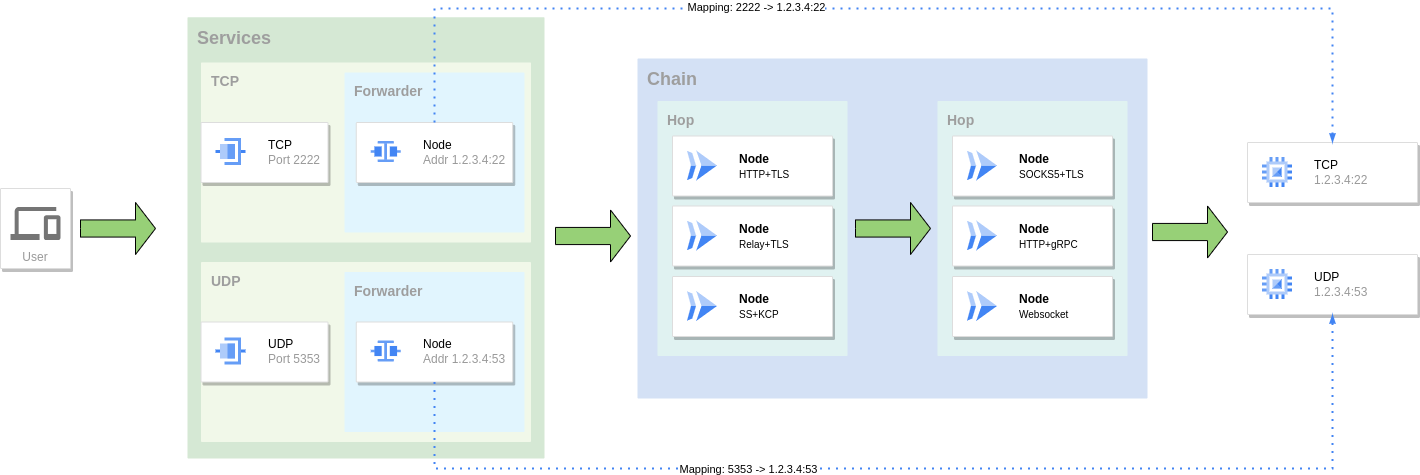- Listening on multiple ports
- Multi-level forwarding chain
- Rich protocol
- TCP/UDP port forwarding
- Reverse Proxy and Tunnel
- TCP/UDP transparent proxy
- DNS resolver and proxy
- TUN/TAP device
- Load balancing
- Routing control
- Admission control
- Bandwidth/Rate Limiter
- Plugin System
- Prometheus metrics
- Dynamic configuration
- Web API
- Web UI
There are three main ways to use GOST as a tunnel.
As a proxy service to access the network, multiple protocols can be used in combination to form a forwarding chain for traffic forwarding.
Mapping the port of one service to the port of another service, you can also use a combination of multiple protocols to form a forwarding chain for traffic forwarding.
Use tunnel and intranet penetration to expose local services behind NAT or firewall to public network for access.
https://github.com/go-gost/gost/releases
# install latest from [https://github.com/go-gost/gost/releases](https://github.com/go-gost/gost/releases)
bash <(curl -fsSL https://github.com/go-gost/gost/raw/master/install.sh) --install# select version for install
bash <(curl -fsSL https://github.com/go-gost/gost/raw/master/install.sh)git clone https://github.com/go-gost/gost.git
cd gost/cmd/gost
go build
docker run --rm gogost/gost -V
Wiki: https://gost.run
Telegram: https://t.me/gogost
Google group: https://groups.google.com/d/forum/go-gost
Legacy version: v2.gost.run



